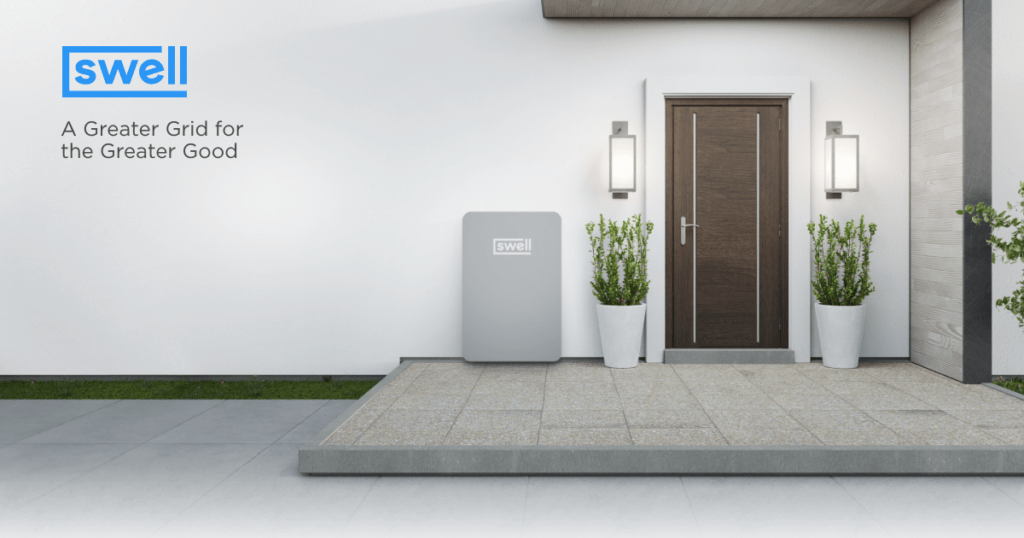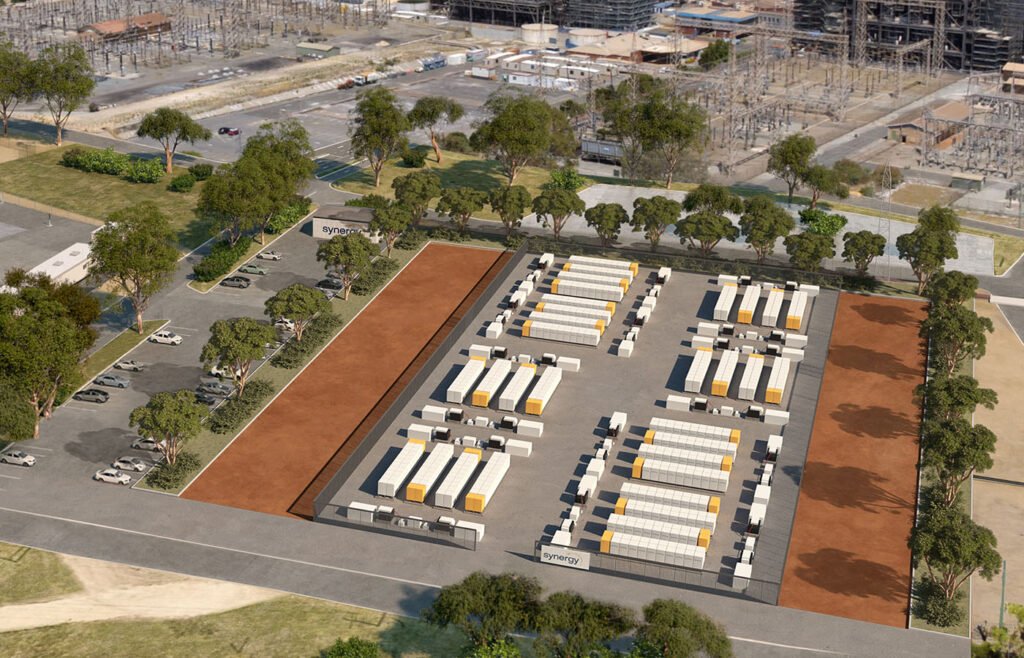When partnered with Artificial Intelligence (AI), the next generation of battery energy storage systems (BESS) will give rise to radical new opportunities in power optimisation and predictive maintenance for all types of mission-critical facilities.
Undeniably, large-scale energy storage is shaping variable generation and supporting changing demand as part of the rapid decarbonisation of the energy sector. But this is just the beginning.
Here, Carlos Nieto, Global Product Line Manager, Energy Storage at ABB, describes the advances in innovation that have brought AI-enabled BESS to the market, and explains how AI has the potential to make renewable assets and storage more reliable and, in turn, more lucrative.
It is no surprise that more industrial and commercial businesses are embracing green practices in a big way. With almost a quarter (24.2%) of global energy use attributed to industry1, its rapid decarbonisation is a critical component of our net zero future and remains the subject of new sustainable standards and government regulations across the world.
Adding further pressure is an increasingly eco-conscious consumer, demanding the companies they spend with go the extra mile to be as environmentally friendly as possible. This is seen in a recent analysis of the stock market which revealed a direct link between pro-sustainability activity and positive stock prices impact2.
More than ever though, going greener isn’t just about ticking the environmental, social, and governance (ESG) boxes, but an issue of energy security. For years, traditional fossil-based systems of energy production and consumption – including oil and gas – have become increasingly expensive.
Add to that the current energy crisis, and businesses now face historic energy price highs not seen since the early 70s3 and widespread supply issues. For energy-intensive industrial and commercial premises where continuous power supply is often mission critical, this places an even greater onus on sustainability to mitigate the risks of escalating fuel prices and market volatility.
The result is a profound shift in the energy landscape, as more companies move away from the entrenched centrally run energy model and transition to self-generation for a more sustainable and secure future.
Decarbonisation, decentralisation and digitalisation: Benefits and challenges
As with most aspects of the highly complex energy category, this transition is not necessarily a simple one.
To understand why, we must first consider what are widely established as the key drivers of this change – decarbonisation, decentralisation, and digitalisation. While they each bring their own set of benefits, they also bring challenges too.
In terms of decarbonisation, global industry continues to make progress toward reducing emissions and, in turn energy costs, by ramping up the pace and scale of renewable investments. But, while this shows progress, the reality is that the inherent variability of wind and solar poses some limitations.
Solar, for example, will only generate electricity in line with how much sunshine there is and will not match the same profile of the electricity that a site is using. Used in silo, companies are left with having to top-up with electricity from the grid or waste any excess generated.
Adding further complexity is the opportunity for decentralisation. The decentralised nature of renewable generation holds the potential for power users to not only produce much of the electricity they need locally, but to transition to an independent energy system, such as a microgrid, for the ultimate in self-sufficiency.
One of the major benefits of a microgrid is that it can act as part of the wider grid while also being able to disconnect from it and operate independently, for example, in the event of a blackout. Of course, this presents a huge advantage for mission critical applications, where even a moment’s downtime can entail huge operational and financial implications.
But this also brings challenges. Although a decentralised approach makes for a more resilient and secure system, it must be carefully ‘synced’ to ensure stability and alignment between generation and demand, and the wider central network.
Achieving this and meeting decarbonisation goals requires digitalisation. This will lead to a shift towards advanced energy management software which allows real-time automated communication and operation of energy systems. Such software will allow businesses to optimise the generation, supply, and storage of renewable generation according to their requirements, the market and other external factors.
In the future, it is predicted that companies could even go beyond self-sufficiency and leverage a lucrative new revenue stream by reselling excess generation, not just back to utilities but even direct to consumers or other businesses.
But for now, we need to focus on what the most suitable framework is for delivering this new layer of next-generation intelligence for the evolving energy system.
Artificial Intelligence can take BESS to a new level of smart operation
The answer to this and many of the other key challenges facing this energy transition lies in BESS.
‘Behind-the-meter’ BESS solutions already form a central part of decarbonisation strategies, enabling businesses to store excess energy and redeploy it as needed for seamless renewable integration.
When partnered with an energy management system (EMS), monitoring and diagnostics, the BESS allows operators to optimise power production by leveraging peak shaving, load-lifting, and maximising self-consumption.
Another big advantage is that these systems can provide critical backup power, preventing potential revenue losses due to production delays and downtime. But there’s more.
Beyond tackling decarbonization, applying Artificial Intelligence (AI) takes BESS to a completely new level of smart operation.
As many operatives will know, energy storage operations can be complex. They typically involve constant monitoring of everything, from the BESS status, solar and wind outputs through to weather conditions and seasonality. Add to that the need to make decisions about when to charge and discharge the BESS in real-time, and the result can be challenging for human operators.
By introducing state-of-the art AI, we can now achieve all of this in real-time, around-the-clock for a much more effective and efficient energy storage operation.
This unique innovation takes a four-pronged approach: data acquisition, prediction, simulation, and optimisation. Using advanced machine learning, the system is able to constantly handle, analyse and exploit data.
This data insight is partnered with wider weather, seasonality and market intelligence to forecast future supply and demand expectations. As a final step, a simulation quantifies how closely the predictions resemble the real physical measures to provide further validation.
The result is radical new potential for energy and asset optimisation. Through predictive analytics, it will allow commercial and industrial operators to save and distribute self-generated resources more effectively and better prepare for upcoming demand. It can also ensure ‘business as usual’ in the ability to identify and address issues before they escalate and anticipate similar failures or performance constraints.
Greater intelligence is incorporated throughout the system, which allows operators to understand everything from the resting state of charge to the depth of discharge and how these factors can degrade the battery over time. This intelligence makes it easier to predict wear and tear, increases overall lifespan and ultimately the return on the investment for the end user.
There is no doubt that the energy transition is on, as decarbonisation, decentralisation and digitalisation continue to redefine everything we thought we already knew about how to produce and consume energy.
While this brings new complexity for industrial and commercial operators, it also provides an opportunity to reimagine environmental strategy and take advantage of innovation.
With benefits that include significant energy reductions, asset optimisation and mission-critical reliability, the transition to AI-enabled BESS is an inevitable and intelligent one.
Notes:
1 Our World in Data – Emissions by Sector. September 2020.
2 Sustainability and Stock Prices. The Joint Venture Alchemist website, October 2020.
3 CNN Business article quoting World Bank. April 2022.
About the Author
Carlos Nieto is the Global Product Line Manager for Energy Storage for ABB, providing small to large scale digitally enabled energy storage systems across a variety of segments to support the decentralisation, decarbonisation and digitalisation of the electrical grid. He has dedicated more than 15 years in the electrical industry with a primary focus on medium- and low-voltage solutions, power conversion and digital control, supporting customers as they transition to the new energy future.
Continue reading










